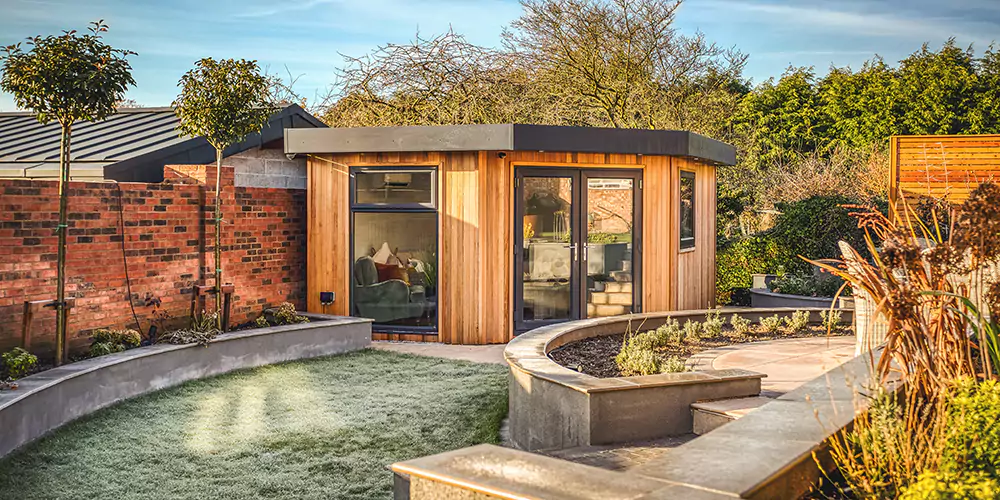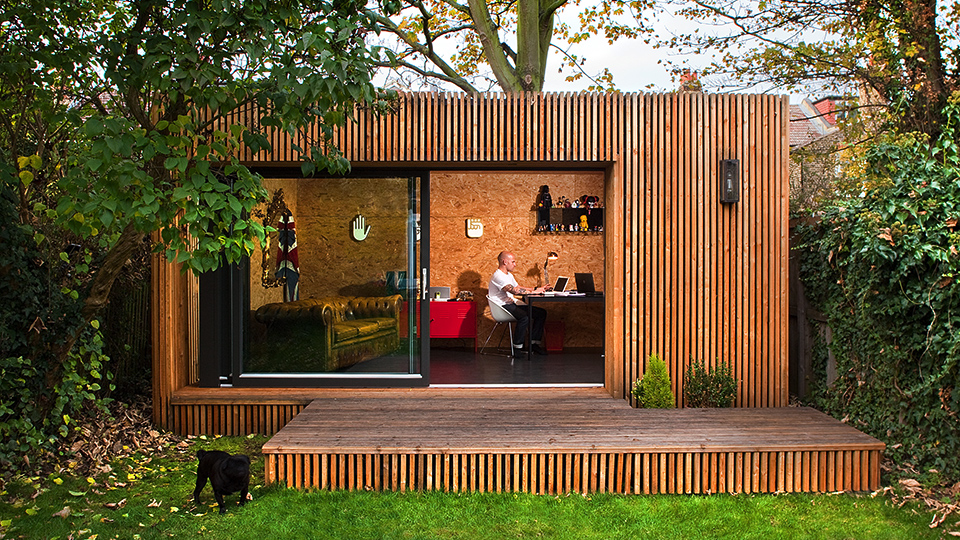Top Advice For Planning Permission For Garden Summer Houses
Top Advice For Planning Permission For Garden Summer Houses
Blog Article
In Conservation Areas, What Permissions Do You Require For Garden Rooms As Well As Other Structures?
Specific restrictions are in place to ensure the beauty and character of conservation areas. This applies to garden rooms, conservatories or outhouses. These are the most important aspects to be considered when planning permission is needed in conservation zones:
A conservation area may require permission to plan any building extension, construction or other type that is typically protected by development rights. This applies to garden sheds as well as other outbuildings.
Size and Scale
Structures of any size may require planning permission if considered to alter the nature of the conservation area. In designated zones, there are more strict restrictions on the size and shape of new structures or extensions.
The property's location:
It is more typical to need planning permission for building extensions and other structures located in front or on the sides of the home. It may also be necessary to seek planning permission for structures located behind the property, particularly if they are visible from public area or have an impact on the neighborhood's character.
Materials and Design
It is important to choose materials and designs that are in line with the historical or architectural interest of the region. Materials employed in any new building or extension should be in harmony with the architectural or historical significance of the area. To ensure that these requirements are fulfilled, planning permission will be required.
Demolition:
Planning permission is typically needed in conservation areas to make sure that the changes made are in line with an region's distinct character.
Height Restrictions
In conservation zones, the height restriction is stricter. If a structure exceeds 2.5 meters in height then it is probable that the planning permit will be required.
Effect on the Surroundings
A permit for planning is required for any construction or extension that has a significant impact on the appearance or the setting of an area of conservation. This includes the views from and to the area.
The use of the building
Even if a garden room or outbuilding falls within permitted size limits, its intended usage (e.g. for an office space, studio or other living space) could require permission for planning in order to accommodate changes to the property's uses.
The following are extensions and modifications:
In general, extensions that alter the style of the building or exceed certain size or volume limitations will require planning approval. This includes conservatories and other major changes.
Curtilage Structures:
Planning permission is required for structures within the boundaries of conservation zones. This is for expansions, outbuildings or alterations.
Trees that are protected
The trees are protected in conservation areas. Tree works consent might be required if are planning a construction that will affect trees.
Local Authority Guidelines:
Local planning authorities can establish specific guidelines and limitations for each conservation area. These criteria can be tailored to fit the particular nature and character of each area.
In summary, to obtain planning permission in conservation zones it is essential to determine the way your garden room or conservatory will affect the area's historical and architectural style. A prompt discussion with the local planning authority is vital to ensure that the project is in compliance with all guidelines and regulations. View the top cardio workouts welwyn for blog advice including do you need planning permission for a garden room, outhouses for garden, garden rooms near me, garden rooms near me, garden rooms near me, do you need planning permission for a garden room, how to lay decking on soil, my outhouse, ground screws vs concrete base, myouthouse and more.
What Planning Permits Are You Required To Obtain For Your Garden Spaces, Etc. Of Environmental Impact?
Planning permissions are affected by the environmental impact of conservatories, garden rooms and outhouses. Here are a few of the most crucial environmental factors you should consider: Biodiversity as well as wildlife and the other natural resources.
If the proposed construction would affect wildlife habitats within your region, like local hedgerows, trees or ponds, then you'll need planning permission. A survey of the environment might be required to determine and limit the impact on biodiversity.
Protected species and habitats
A permit for planning is required for any site that is protected animals (e.g. bats, newts) or is within or near habitats of special scientific interest (SSSI). They must be protected by special precautions.
Tree Preservation Orders:
Planning permission might be required if the project includes the removal or modification of trees protected by TPOs. Local authorities will evaluate any impact and may demand new planting or mitigation measures.
Risk and Management of Flood Risk and Water Management
Planning permission is needed for any development near waters bodies or areas that are prone to flooding. It could be necessary to perform a flood risk assessment in order to make sure that the structure is not susceptible to flooding and has drainage solutions.
Sustainable Construction Methods for Sustainable Construction
To ensure that sustainable construction materials and techniques are employed, planning permission may be required. This is a way of assessing energy efficiency and insulation and carbon footprints of the building materials.
Drainage and Surface Water Runoff
The impact of the construction on surface water drainage and runoff is an important environmental issue. The permission to plan will guarantee that the drainage system is in place, and helps prevent flooding or waterlogging.
Soil Stability and Soil
This includes potential issues like subsidence or soil erosion especially on sloped sites. This can include issues such as subsidence or erosion of soil particularly on sloped sites.
Air Quality
For any development that might affect the quality of air in the local area (such in the vicinity of major roads or industrial areas) approval for planning will be required. The air pollution level should be within acceptable levels and mitigation measures should be in place.
Noise Pollution:
If the use that is planned for the garden room or extension is likely to generate substantial noise (e.g., a workshop or music studio) Planning permission is required. The local authorities will assess noise levels to determine the effects of these levels on nearby residents and the environment.
Waste Management:
A well-organized waste management system throughout and post-construction, is essential. Planning permission ensures that the construction site has recycling facilities and waste disposal to minimize the environmental impact.
Energy Efficiency
The planning permit could include conditions for energy efficiency such as solar panels high-performance glazing, or any other green technology. This will reduce the environmental impact of the building.
Environmental Regulations
Environmental regulations exist at local and national level as well as local level, such as the UK Environmental Protection Act. Planning permission ensures all legal requirements are met in addition to the development being environmentally sustainable.
In the end, planning permission for garden rooms, conservatories, outhouses, garden offices or extensions should take into account a wide spectrum of environmental impact. Check with the local planning authority as early as you can during the planning phase to make sure you are aware of the particular requirements. Have a look at the best out house for more advice including outhouse buildings, outhouse garden, ground screws vs concrete, how to lay decking on soil, garden office electrics, garden outhouses, ground screws vs concrete, outhouse builders, garden office electrics, herts garden rooms and more.
What Kind Of Permission Do I Require For Garden Areas, Etc. With Regard To Agricultural Lands
It is important to consider the following restrictions and planning permissions when building a garden room conservatory, outhouse, garden office, or an extension to agricultural property. Here are a few important points:
Land that is agricultural is a good place to start farming activities as well as other related ones. Its conversion to residential or for garden structures, usually requires approval from the planning department. This is because it requires a change in its intended use as a farm.
Permitted Development Rights:
Residential land is subject to a different set of permissible development rights than agricultural land. You are able to build some agricultural structures without planning permission. But these types of structures are not intended to be used for residential gardens or offices.
Size and Scale
The scale and size of the building will determine whether or not planning permission is needed. The larger buildings or those that cover a significant area of space are more likely require permission.
The impact of agricultural use
Planning permission may be necessary in the event that the construction will affect the use of land for agriculture in particular by restricting the amount of space available for crops and livestock.
Green Belt Land:
If the agricultural land is also designated Green Belt, there are additional restrictions that aim to prevent urban sprawl and preserving open space. Green Belt land is subject to strict rules and requirements for permits for building new structures.
Design and Appearance
The design and style of the building's design must be in keeping with the rural character of this area. The planning permit will ensure that the building doesn't impact the natural landscape or visual amenities.
Environmental Impact:
It is crucial to consider the environmental impact prior to building on an agricultural property. Planning permission might be required to undertake an environmental impact study to ensure that the new structure doesn't harm local ecosystems and wildlife habitats.
Proximity to existing buildings
The proximity of the proposed garden room or office to existing agricultural buildings can influence the planning requirements. Buildings that are located near farms may be seen differently from those built in open fields.
Access and Infrastructure
Planning permission will assess whether the existing infrastructure is capable of supporting the building. Planning permission will determine if the current infrastructure can support the construction.
Class Order:
Planning law specifies the precise purposes of agricultural land. The change of the use class to accommodate non-agricultural buildings often requires planning permission to make sure that the new use is in line with the local policies on planning.
Local Planning Policies:
Local planning authorities are governed by specific guidelines for agricultural land. These policies determine whether planning permission is granted to non-agricultural structures, taking into account factors like local development plans as well as community needs.
National Planning Policy Framework
In the UK the National Planning Policy Framework gives guidelines for how to utilize and develop land. The NPPF will be used to evaluate the approvals granted to build structures on land that is agricultural. This framework is based on the sustainable development of rural areas, protection and conservation.
Planning permission is required for extensions, conservatories and outhouses as well as garden offices on agricultural land. This is due to the fact that the land needs to be modified to meet local and national planning policy. It is crucial to discuss with your local authority to be aware of the particular requirements. Read the recommended outbouse for more info including armoured cable for garden room, outhouse uk, outhouse garden rooms, gym outhouse, garden buildings , outhouse uk, outhouse for garden, garden room vs extension, armoured cable for garden room, garden rooms in St Albans and more.